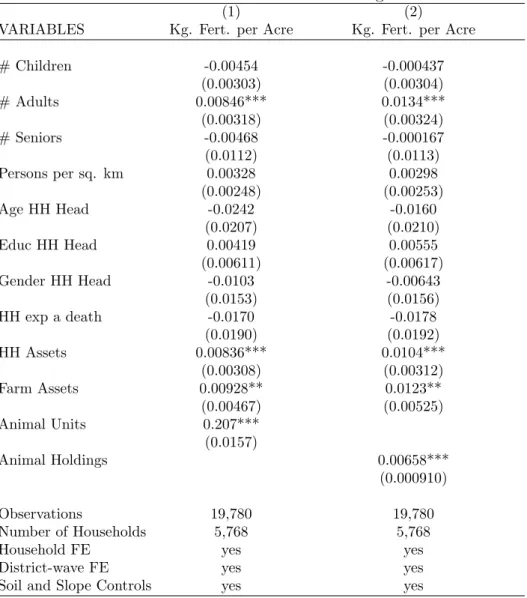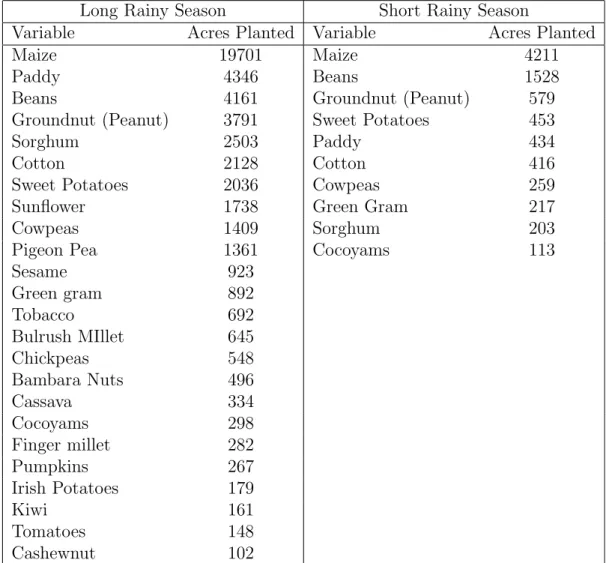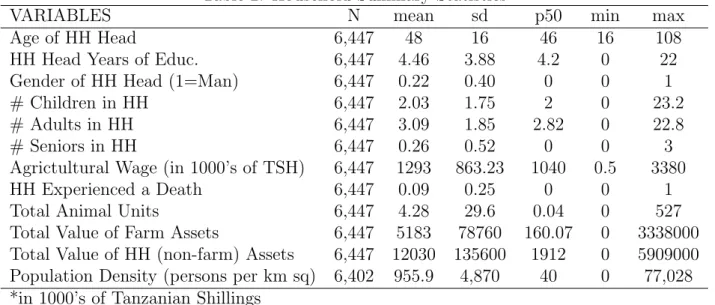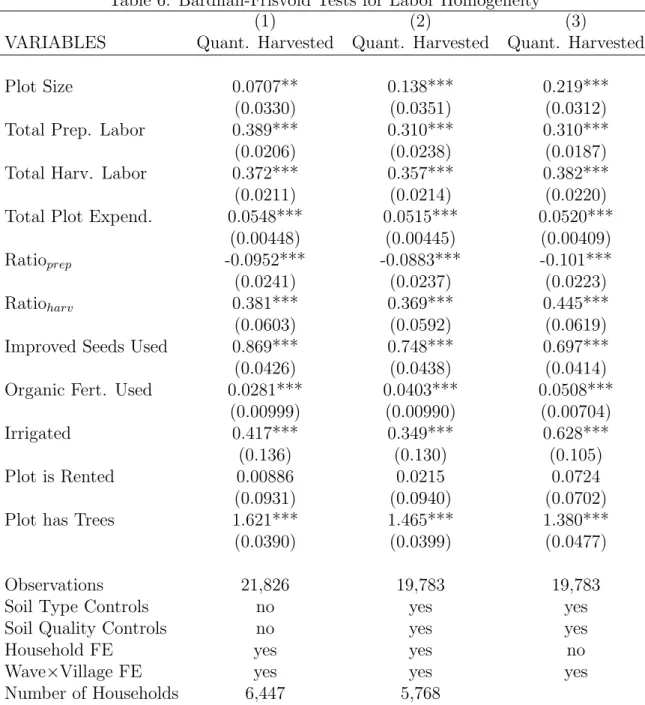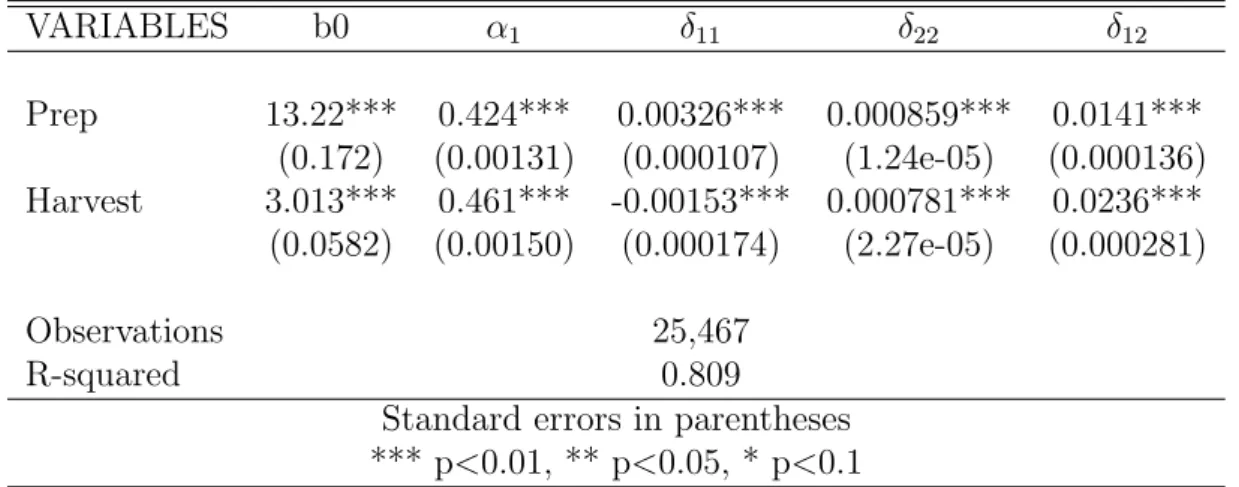If differences in the marginal product of family and hired labor cause total household size to affect labor demand, the separation test will fail. Agricultural research is a popular topic in development microeconomics applied and theoretical literature. Benjamin (1992) theorizes that there may be three main sources of labor market breakdown leading to non-segregation: (1) a binding restriction on non-agricultural employment, (2) labor rationing, (3) and differences in returns to work on the farm and outside the farm.
If the marginal product of labor in a production function is increasing in the proportion of family members, it indicates that family members are more productive than hired labor in terms of output. If the total fertilizer consumption depends on the characteristics of the household, such as the number of animals in the household herd. Bardhan's paper, using Indian agricultural data from surveys of farm operations, finds that family and hired labor are not substitutable in West Godavari and Thanjavur districts, but for the remaining districts in the sample, the author cannot rule out homogeneity of labor.
They add that in the event that the two are not at all substitutable, a family labor migration could actually reduce the demand for hired labor. The dataset used in this paper is nationally representative, which means that all these zones are included in the analysis. Descriptive statistics for household demographics, as well as firm assets and other characteristics can be found in Table 12 in the Appendix.
In the fourth wave of the survey, the same villages were sampled, but the households in the sample were changed, and for the fourth wave data were collected from October 2014 to August 2015.
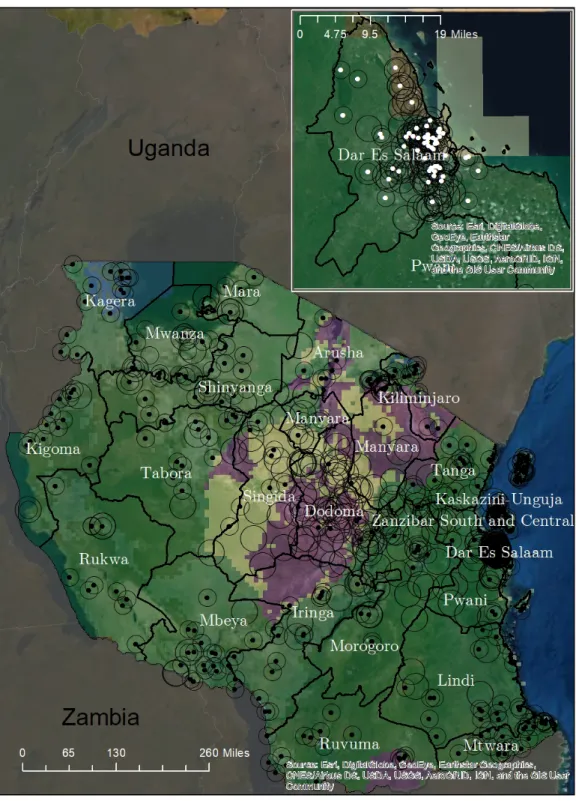
LandScan Data
Tests for Labor Heterogeneity
Other controls include the plot area log, indicator variables for soil quality, soil type, irrigation status, whether the plot is leased by the grower, and an indicator variable in case the plot is planted on hybrid or other improved varieties. . The log of kg organic fertilizer is also used in the control variables, as well as the log of the total plot expenditure. The following expression can be estimated using ordinary least squares (OLS), where Lprep and Lharv are the log of the total number of preparatory and harvest labor days.
Descriptive statistics for the variables used in the regressions can be found in Table 5, and the results can be found in Table 6. The terms RAT IOprep and RAT IOharv are the main variables of interest derived from expression 9. The negative coefficient on the ratio in preparatory period indicates that a higher fraction of family labor in this period sharply reduces the marginal product of preparatory labor.
Focusing on the Harv ratio, the coefficient is now much larger and positive, meaning that an increase in the share of family labor over total harvest labor results in an increase in the marginal product of harvest labor. These regressions show that during the preparatory period of work, when control costs are high for both family and hired labor, a higher share of family labor leads to lower total labor productivity. Moreover, during the harvest period, when control costs are low, an increase in the share of family labor leads to a higher marginal product of labor at harvest.
This, I argue, is evidence that differences in productivity between hired and crop labor can be one source of separation. In the case of this data set, I chose to estimate preparatory labor (any labor that occurs pre-harvest, including planting, weeding, and fertilizing activity) and harvest labor separately. This means that in both the harvest period and the preparatory labor period I can reject perfect substitutability between hired labor and family labor.
This indicates that family labor increases to be more productive during the harvest work period and that the ratio of the marginal productivities (α1/1−α1) is greater during the harvest season, 0.74 (prep) compared to 0.86 (harvest). As we can see, the previous exercise has shown that employee and family are not perfect substitutes, neither in the preparatory period nor in the harvest period. The harvest period estimates indicate that the marginal product of family labor is positive but decreasing, significant at the 0.1% level.

Family and Hired Labor Demand Estimates
The coefficient on the interaction term is also positive, which can be interpreted as implying that increased supervision costs improve employee performance. The effect of an additional adult member in the family is a statistically significant increase in the amount of work provided in the preparation period. Regarding the demand for labor employed in the preparation and harvest periods in columns 3 and 4, an increase in the number of adults in the household results in a statistically significant decrease in the amount of labor required, although the effect is relatively small in size especially in relation to the magnitude of the change in estimates of household demand for work.
The fact that these variables are statistically significant constitutes a firm rejection of labor market segregation. Looking at the field level variables, we see labor increases in field area, organic fertilizer use and total field expenditure.
Fertilizer Factor Allocation Regressions
The effect size is small, meaning that a 1% increase in adult household members results in a 0.01% increase in fertilizer. The fact that household size is a significant determinant of fertilizer use constitutes a rejection of the segregation hypothesis. The use of organic fertilizers is decreasing in the planted area, as well as decreasing in the planted area for all other plots, indicating that organic fertilizers may be "stretched too thin." The use of organic fertilizers is also increasing in basic costs, although the effect is very small.
The fact that the coefficient of leased plots is statistically significant and negative reflects the results of Gavian and Fafchamps (1996), who find that tenure status affects fertilization in Niger, as organic fertilization is a short-term investment whose benefits may last beyond a single agricultural season. The size of the household's herd is also a highly significant determinant of the use of organic manure, reflecting the primary findings in Gavian and Fafchamps (1996), who also find that manure application is determined by the amount of livestock in a household's herd. In column 2, the animal portfolio variable is also statistically significant, which means that there is still an indication of separation when another indicator for the size of the households' animal holdings is used.
The rest of the plot-level variables provide results that are largely consistent with expectations.
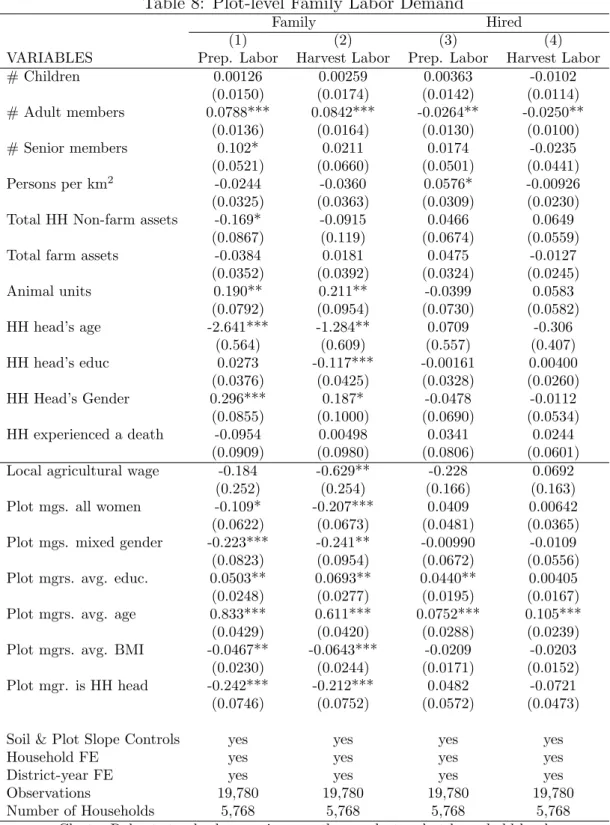
Robustness Checks
For this robustness check, to combat concerns about the endogeneity of household members in household labor demand, I exclude all work that was done on the plot by household members who recently joined the household as a measure to control for household endogeneity. composition for decisions about the agricultural workforce. On the basis of the questionnaire, it is possible to identify which household members have entered the household in the past year and for what reason they have moved. In this robustness check, all contributions from survey participants who reported moving within the last year due to acquisition of agricultural land or for work purposes are excluded.
The test still strongly rejects labor market perfection in this case, and the results can be found in Table 11. The third robustness check, found in Table 15, assesses whether farms of different sizes have different labor requirements. The smallest quintile of farms is smaller than a football field, and the largest quintile of farms is larger than ten football fields.
All tests still reject labor market completeness, although households in the largest quintile of farms appear to be the most constrained in their labor use. This paper uses high-quality panel data from Tanzania to examine labor market inefficiencies. Using two tests, I find that hired labor is more efficient than family labor, although the difference in productivity between hired and family labor decreases in the harvest season according to the Deolalikar-Vijverberg test.
This result is important because differences between family and hired labor are considered a potential source of labor market inefficiency. In all specifications, my test rejects the completeness of labor markets and confirms the non-separable nature of household production and consumption decisions. In all cases, increases in the number of working adults in the household result in increases in labor used for.
The same results apply to fertilizer, with fertilizer application highly dependent on household characteristics such as the size of the household's herd and assets. Size, Productivity and Returns to Scale: An Analysis of Farm Level Data in Indian Agriculture. Impact of state and civil institutions on the operation of rural market and non-market configurations.
